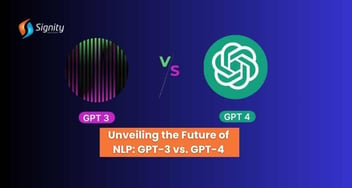The Role of Transformers in Revolutionizing NLP
Discover the power of Transformers in Natural Language Processing (NLP) through this concise overview. Explore their innovative architecture and practical implementations in Node.js, transforming tasks like sentiment analysis and machine translation with unparalleled efficiency and accuracy.
In the ever-evolving landscape of Natural Language Processing (NLP), Transformers have emerged as a revolutionary technology, reshaping how machines understand and generate human language.
This article explores the pivotal role of Transformers in NLP, delving into their architecture applications and providing technical implementations using Node.js.
Understanding the Transformer Architecture
Transformers represent a breakthrough in NLP architecture, introduced by Vaswani et al. in the paper "Attention is All You Need."
The fundamental innovation lies in the attention mechanism, enabling the model to focus on different parts of the input sequence simultaneously. Unlike traditional sequential models, Transformers process entire sequences in parallel, making them highly efficient.
Implementation: Building a Simple Transformer Model with Node.js
Let's delve into the technical aspects of creating a simplified Transformer model for sequence classification using Node.js. In this example, we'll use the `transformers` library.
Node.js Implementation
Set Up Your Development Environment
Begin by setting up your Node.js development environment and installing the required packages.
Create an Express Server for Transformer Model
Set up an Express.js server to handle requests for sequence classification using the Transformer model.
Run Your App
Run your Node.js server using the following command:
Your simple Transformer model for sequence classification should now be accessible at `http://localhost:3000/classify-sequence` or the specified port.
Applications of Transformers in NLP
- Sentiment Analysis: Transformers excel in sentiment analysis tasks, accurately determining the sentiment expressed in a piece of text.
- Named Entity Recognition (NER): Transformers are effective in identifying and classifying entities such as names, organizations, and locations in text.
- Machine Translation: Transformers have been instrumental in improving the quality of machine translation models, enabling more accurate and context-aware translations.
- Text Summarization: The attention mechanism in Transformers makes them well-suited for generating informative and concise text summaries.
Considerations and Best Practices
- Model Fine-Tuning: Fine-tune Transformer models on domain-specific data for optimal performance in specific applications.
- Resource Allocation: Transformers can be resource-intensive, so consider model size and computational requirements when deploying in production.
- Interpretability: While powerful, Transformer models can be complex. Implement tools for interpreting model decisions to enhance trust and understanding.
- Continuous Learning: Regularly update Transformer models with new data to adapt to evolving language patterns and nuances.
- Multilingual Support: Transformers support multilingual applications, making them versatile for global NLP tasks.
Empower Your Business with AI
Unlock the full potential of artificial intelligence solutions! Talk to our experts and get custom solutions!
Conclusion
Transformers have ushered in a new era in Natural Language Processing, enabling machines to understand and generate human language with unprecedented accuracy and efficiency. As developers harness the power of Transformers using technologies like Node.js, we witness the transformation of NLP applications across various domains.
The journey of Transformers in NLP is dynamic and promises continuous innovation, pushing the boundaries of what machines can achieve in understanding and processing natural language.



.png?width=344&height=101&name=Mask%20group%20(5).png)
















